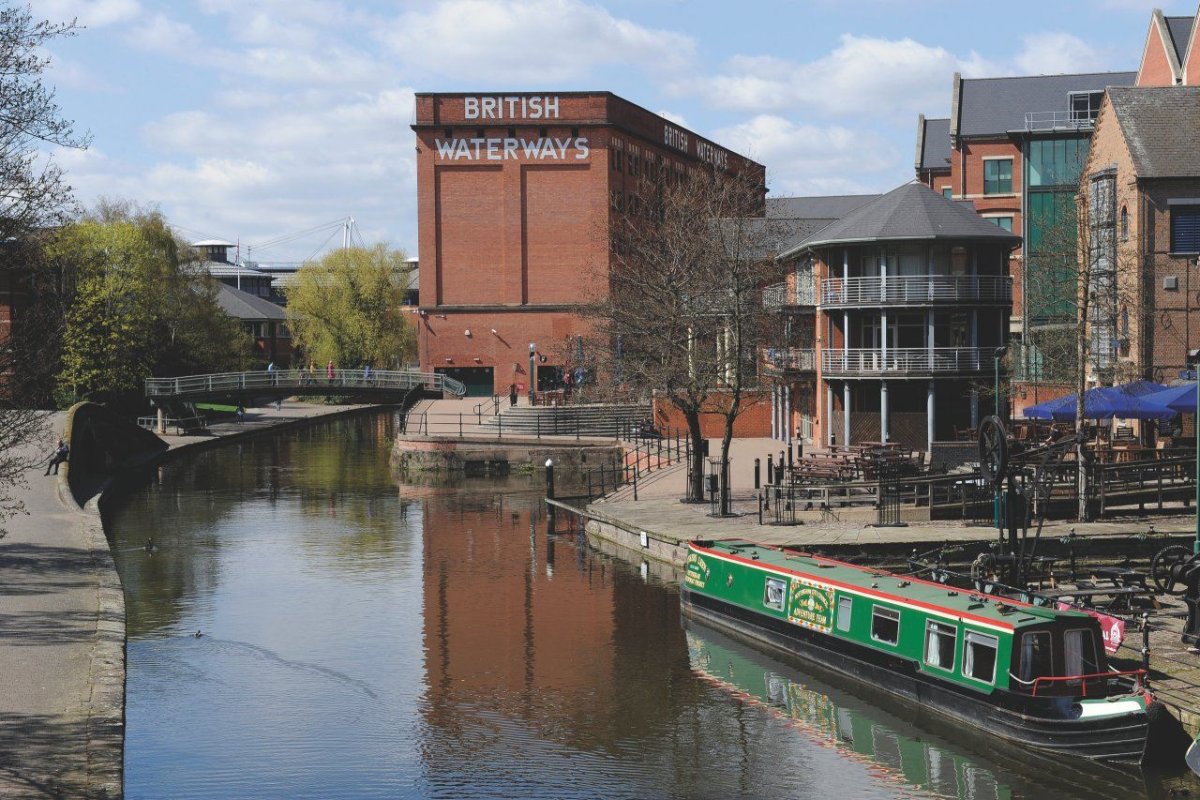
There are hundreds of caves beneath Nottingham, cut into the sandstone over the centuries by the city's inhabitants. Some were cold, damp homes for the poor; some were extra rooms under medieval houses—a way of adding an extension without incurring a tax increase. Some were dungeons: deep bottle-shaped cells. There was a chapel, a brewery, and a tannery. More recently, dozens were used as air-raid shelters during the Second World War—one, underneath a cigarette factory, could hold 8,000 people.
Some of these caves are open to the public. There are "cave bars"—Ye Olde Trip to Jerusalem is a pub carved into the cliff underneath Nottingham Castle. Others are private cellars. A few have even been converted into ironically expensive homes. Quite a number, though, have failed to survive housing improvements, the building of new office blocks and department stores, a new railway and wider roads. Drury Hill was a narrow, cobbled lane famed for the huge rock cellars underneath its houses, but was bulldozed in the 1960s to make way for a shopping center. On the site of the old Town Gaol, on top of the now concrete-filled medieval dungeons, today there is one of the largest contemporary art galleries in the U.K.
The pull between history and progress is a contentious issue in Nottingham. Billions of pounds have been spent on transforming the city center. For some, the development is entirely positive, providing first-rate venues and facilities, creating new jobs and economic growth. For others, proud of Nottingham's architectural legacy, the regeneration has only contributed to the erosion of the city's character, the loss of historic buildings and independent shops, and the proliferation of new bars.
Nottingham is proud, too, of its literary heritage. The outlaw Robin Hood, whose story was first told in narrative ballads, is honored with a statue that stands between Nottingham Castle and Maid Marian Way. Newstead Abbey, 12 miles north of the city, is the ancestral home of Lord Byron. Arriving there from London with his mother, Byron found it in a state of disrepair but nonetheless lived there on and off, or in a house a couple of miles away, when he was not away at school or college. D.H. Lawrence, born in the nearby town of Eastwood and educated in Nottingham, drew on his local knowledge to write many of his works, including Lady Chatterley's Lover. Alan Sillitoe was born and raised in Nottingham and set his first novel, Saturday Night and Sunday Morning, in the inner-city area of Radford.
Interestingly, all three of these authors, from early adulthood, lived mainly abroad or in London, although they continued to express their affection for, or loyalty toward, their Nottingham or Nottinghamshire homes. "Newstead and I," said Byron, "stand or fall together." He wanted to be buried at the abbey with his dog, although he was instead buried in the family vault at a nearby church. The local village of Underwood was, for Lawrence, "the country of my heart." Sillitoe, in an interview given two years before he died, said, "I don't think I've left Nottingham altogether—I certainly never left it in my spirit ... I've always had a very soft spot for Nottingham." The city continues to have a vibrant writing scene and a great deal of pride in its local authors.

My dad first arrived in Nottingham in 1957 to teach at a grammar school in West Bridgford—an affluent suburb home to Nottingham Forest Football Club and Trent Bridge cricket ground. I was born in Manchester but grew up in a town 15 miles south of Nottingham, midway between Manchester and London. As a child, I went into Nottingham to use the ice rink (which has now been replaced by the 10,000-seat National Ice Centre), and in my teens and early 20s, I went regularly to a club called Rock City. One of the U.K.'s best live-music venues, and host to such bands as Nirvana and the Pixies in the late '80s and early '90s, Rock City is still going strong.
My husband and I now live in a village 12 miles from the center of Nottingham, and our little boy loves the caves—you can take a guided tour of a protected section, and sitting on an ancient sandstone bench, you can hear the very modern trams rumbling overhead.
Uncommon Knowledge
Newsweek is committed to challenging conventional wisdom and finding connections in the search for common ground.
Newsweek is committed to challenging conventional wisdom and finding connections in the search for common ground.
About the writer
To read how Newsweek uses AI as a newsroom tool, Click here.








